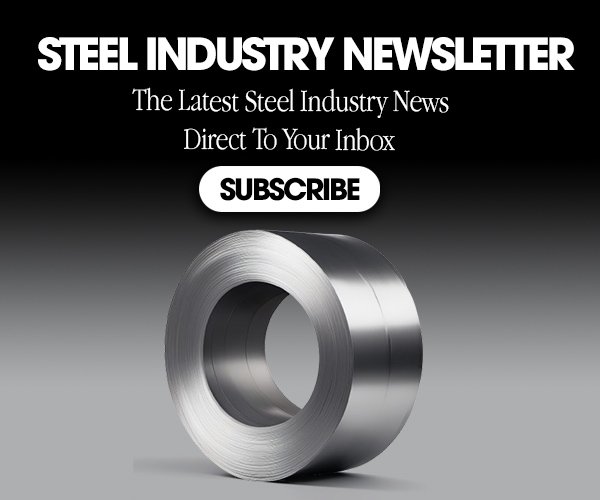Nucor Corporation, has made a shift in its pricing strategy by decreasing the Consumer Spot Price (CSP) for hot-rolled coil (HRC) by $20 per ton to $910 per short ton, effective May 5, 2025. This unexpected price reduction comes after weeks of maintaining the price at $930 per ton, signaling a potential turning point in the steel market that has seen consistent price increases throughout early 2025. The price at California Steel Industries (CSI), a Nucor facility, has similarly decreased to $970 per ton, down from the previous $990 per ton level. This strategic pricing decision breaks a pattern of nine consecutive price increases implemented by Nucor since the beginning of the year and raises important questions about the current state of steel demand, production capacity, and market competition.
Nucor’s 2025 Pricing Trajectory: From Steady Increases to Strategic Reduction
Nucor’s pricing strategy throughout early 2025 had been characterized by a series of consistent increases, reflecting both recovering demand and strategic positioning in the market. The company began the year with a benchmark price of $760 per short ton announced in late January, following a challenging financial period in 2024 that saw significant profit declines. From that starting point, Nucor implemented a methodical series of price increases, bringing the CSP for hot-rolled coil to $930 per short ton by mid-March, representing a significant $170 per ton cumulative increase in less than three months.
The pricing momentum continued through late March, with Nucor announcing its ninth price increase of 2025 on March 24, which brought the HRC base price to $935 per short ton for most facilities ($995 per ton for CSI). This consistent upward trajectory reflected both improving market conditions and strategic alignment with other major producers like Cleveland-Cliffs, which had set similar price targets for April contracts.
Nucor’s 2024-2025 Price History with Today’s Update
| Announcement Date | Nucor HRC Base Price ($/ton) | Change ($/ton) | Notes |
|---|---|---|---|
| July 24, 2024 | $675 | – | Baseline for H2 2024 |
| August 7, 2024 | $700 | +$25 | First increase in new cycle |
| August 28, 2024 | $720 | +$20 | |
| September 18, 2024 | $740 | +$20 | |
| October 9, 2024 | $760 | +$20 | |
| October 30, 2024 | $780 | +$20 | |
| November 20, 2024 | $800 | +$20 | |
| December 11, 2024 | $830 | +$30 | |
| January 22, 2025 | $860 | +$30 | First 2025 price hike |
| February 5, 2025 | $890 | +$30 | |
| February 19, 2025 | $900 | +$10 | |
| March 4, 2025 | $920 | +$20 | |
| March 18, 2025 | $930 | +$10 | |
| April 1, 2025 | $930 | – | Price held for 3 weeks |
| April 8, 2025 | $930 | – | Price held for 3 weeks |
| April 15, 2025 | $930 | – | Price held for 3 weeks |
| May 5, 2025 | $910 | -$20 | First decrease since July 2024 |
Key Observations:
- Nine consecutive price increases from July 2024 to March 2025, totaling a $255/ton rise.
- Price held at $930/ton for three weeks in April 2025, signaling a strategic pause.
- First decrease in nearly a year on May 5, 2025, lowering the CSP to $910/ton.
April’s Price Freeze: What It Signaled
The three-week hold at $930/ton in April was unprecedented in this pricing cycle. For buyers and analysts, it suggested that Nucor-and by extension, the U.S. steel market-was testing the upper limit of what customers would accept. The pause allowed the market to absorb earlier increases and provided a window into real demand elasticity. This “strategic pause” was widely interpreted as a sign that either demand was softening, inventories were rising, or that Nucor was watching for cues from competitors and downstream sectors before making its next move.
May’s Price Drop: A Strategic Shift
The $20/ton decrease to $910/ton on May 5, 2025, marks a clear pivot. It’s the first downward adjustment since the current pricing cycle began in July 2024. This move could reflect:
- A need to stimulate new orders as buyers balked at the $930/ton level.
- Inventory pressures or a response to increased domestic production.
- Competitive positioning as other mills held or adjusted their own prices.
- Large buyer spot price seize the opportunity to take advantage of reduced demand.
The table above encapsulates the dramatic journey of Nucor’s HRC CSP price over the past 10 months, culminating in a move that could signal a new phase for steel pricing in North America.
Market Forces Behind Nucor’s $910/ton CSP Price Shift
To understand this move, it’s important to examine the underlying market forces and strategic considerations.
1. Demand Dynamics and Buyer Behavior
After months of steady increases, many steel buyers-especially service centers and manufacturers-began to resist further purchases at the $930/ton level. According to industry analysts, this price point became a psychological ceiling, with buyers delaying orders in hopes of a correction
This buyer hesitation likely contributed to Nucor’s decision to end the price freeze and offer a modest reduction, aiming to reignite order activity and clear excess inventory.
2. Supply and Capacity Utilization
Nucor’s Q1 2025 results revealed improved mill utilization rates, with operating rates climbing to 80%-up from 74% in Q4 2024. While higher utilization typically signals healthy demand, it also means more steel is entering the market. If demand doesn’t keep pace, inventory builds and price pressure can follow.
Fact:
- Q1 2025 shipments: 6.83 million tons (up 13% from Q4 2024)
- Operating rate: 80% (up 6 percentage points from Q4 2024)
These figures suggest that Nucor’s mills were running strong, but perhaps too strong for current demand levels-prompting the need for a price adjustment to maintain volume.
3. Competitive Pressures
The steel market in 2025 has been marked by tight competition among domestic producers. While Nucor led with aggressive price hikes, other mills like Cleveland-Cliffs and U.S. Steel were close behind. In April, Cleveland-Cliffs held its HRC price at $900/ton, but for May, Cliffs increased its HRC price to $975/ton, creating a significant price gap with Nucor. By reducing its CSP to $910/ton, Nucor is reasserting its competitive edge without sparking a full-blown price war.
Table: Recent HRC Price Announcements (April–May 2025)
| Producer | April 2025 HRC Price | May 2025 HRC Price |
|---|---|---|
| Nucor | $930/ton (held) | $910/ton |
| Cleveland-Cliffs | $900/ton (held) | $975/ton |
| U.S. Steel | $920/ton (held) | $910/ton |
The Global HRC Market and the Growing Domestic-Import Price Spread
The world market for hot rolled coil (HRC) is a crucial backdrop for understanding Nucor’s recent price cut and the broader volatility in U.S. steel pricing. In May 2025, the gap between domestic and import HRC prices has widened dramatically, and this spread is a significant factor influencing both mill strategies and buyer behavior.
Current Global and Import HRC Prices (May 2025)
| Region | Export Price (USD/metric tonne) |
|---|---|
| World Export | $465 |
| China | $380 |
| Western Europe | $750 |
| United States | $1,020 |
- World Export Price: $465/tonne (April 28, 2025)
- China Export Price: $380/tonne
- Western Europe Export Price: $750/tonne
- U.S. Domestic Price: $1,020/tonne (approx. $925 per short ton)
- Typical Import Offers to U.S.: $600–$700/tonne CIF, depending on origin and tariffs
The Price Spread: Domestic vs. Import
The spread between U.S. domestic HRC prices and global export prices is now historically wide. With U.S. mills like Nucor and Cleveland-Cliffs posting May prices of $910/ton and $975/ton respectively, domestic buyers are facing a premium of $200–$500/ton over world market offers, even after accounting for tariffs and shipping costs.
Key Drivers of the Spread:
- Strong U.S. Demand: Despite some recent softening, U.S. demand remains well above global averages, supporting higher price levels.
- Global Weakness: Chinese and world export prices have dropped due to sluggish demand and oversupply, especially in Asia.
- European Divergence: Western Europe’s HRC price is also well below the U.S., but above Asian levels, reflecting regional differences in demand and cost
- Tariffs: Newly announced US tariffs on steel.
Market Implications
- Import Pressure: The vast price gap is tempting for U.S. buyers, especially service centers and manufacturers, to seek out import deals despite longer lead times and trade risks.
- Buyer Leverage: As the spread grows, domestic mills may face increased resistance from buyers, who can use global offers as negotiating leverage.
- Potential for Price Correction: If imports rise or domestic demand weakens further, U.S. mills may be forced to adjust prices downward to remain competitive.
- Strategic Uncertainty: Mills like Nucor are watching global trends closely. A sustained global price slump could undermine the ability of U.S. producers to hold elevated prices, especially if tariffs are relaxed or circumvented.
4. Macro-Economic and Policy Factors
The U.S. steel market is also influenced by macroeconomic trends and trade policy. The reimposition of Section 232 tariffs in March 2025 has limited some import competition, but global steel flows remain a factor. Additionally, the Federal Reserve’s interest rate policies and broader economic signals (such as construction and automotive output) play a role in shaping demand.
Quote:
Leon Topalian, Nucor CEO, stated in April:
“We’re seeing solid demand for the steel and steel products we manufacture, but we’re also mindful of market volatility and the need to stay agile.”
Strategic Implications: What Nucor’s Price Drop Means for the Market
Nucor’s move is more than just a routine price adjustment-it’s a strategic signal to the entire steel value chain.
A. Testing the Market Floor
By holding at $930/ton for three weeks, Nucor effectively tested the market’s tolerance for high prices. The subsequent decrease to $910/ton suggests that the market’s “pain threshold” was reached, and that a correction was necessary to stimulate new orders.
B. Volume Over Margin
With utilization rates high and inventories building, Nucor’s priority has shifted toward maintaining mill volume and throughput. This is a classic “volume over margin” play-accepting slightly lower prices to keep mills running efficiently and avoid deeper price cuts later.
C. Signaling to Competitors and Buyers
Nucor’s decision to move first sends a message to both competitors and buyers:
- To competitors: Nucor is willing to adjust and lead on pricing, but not to spark a race to the bottom.
- To buyers: The company is responsive to market realities and willing to negotiate, but only within a disciplined framework.
D. Potential for Further Adjustments
If demand remains soft or inventories continue to rise, further price reductions are possible. However, if the $910/ton level successfully stimulates demand, the market could stabilize at this new floor.
Case Study: The 2025 Price Cycle vs. Previous Years
To put Nucor’s 2025 CSP price action in context, let’s compare this cycle to previous years:
Table: Nucor HRC CSP Price Cycles (2022–2025)
| Year | Starting Price | Peak Price | Duration of Upcycle | Largest Single Increase | First Decrease |
|---|---|---|---|---|---|
| 2022 | $1,200 | $1,550 | 6 months | +$100/ton | -$50/ton |
| 2023 | $900 | $1,050 | 4 months | +$50/ton | -$30/ton |
| 2024 | $675 | $830 | 5 months | +$30/ton | -$20/ton |
| 2025 | $860 | $930 | 3 months | +$30/ton | -$20/ton |
Insights:
- The 2025 cycle was shorter and less dramatic than the pandemic-era spikes.
- The $930/ton “ceiling” was tested but not breached for long.
- The $20/ton decrease is consistent with prior correction patterns, though the market is now more sensitive to inventory and demand shifts.
Outlook: What’s Next for Nucor, CSP Pricing, and the Steel Market?
1. Short-Term: Watch for Buyer Response
If the $910/ton price stimulates new orders, Nucor may hold steady or even attempt a modest rebound later in Q2. If not, further reductions could follow, especially if competitors decide to undercut or if economic headwinds intensify.
2. Medium-Term: Inventory and Imports
Monitor service center inventories and import arrivals. If inventories remain high or imports increase despite tariffs, further price pressure is likely. Conversely, if inventories draw down and demand picks up, the $910/ton level could become the new benchmark.
3. Long-Term: Capacity, Demand, and Policy
Nucor’s long-term pricing power will depend on:
- Domestic demand: Construction, automotive, and manufacturing trends.
- Capacity discipline: Both at Nucor and across the industry.
- Trade policy: Tariffs, quotas, and global supply chain shifts.
Chart: Key Factors Impacting Steel Price Direction
| Factor | Bullish for Prices | Bearish for Prices |
|---|---|---|
| Domestic demand | ↑ | ↓ |
| Mill utilization | ↓ | ↑ |
| Imports | ↓ | ↑ |
| Inventories | ↓ | ↑ |
| Raw material costs | ↑ | ↓ |
Conclusion: Nucor’s $910/ton CSP Move-A Market Inflection Point
Nucor’s May 5, 2025, price reduction is a pivotal moment for the North American steel market. After months of relentless increases and a rare three-week price hold, the $20/ton decrease signals a recalibration-a recognition that the market needed relief to keep order books healthy and inventories manageable.
For buyers: This is a window of opportunity to secure steel at more favorable terms, but continued vigilance is needed as the market remains volatile.
For competitors: Nucor’s move is both a challenge and an invitation to recalibrate strategies, with the risk of a price war if discipline falters.
For the industry: The $910/ton CSP price may become the new reference point, at least until demand or supply fundamentals shift again.
As always, steel market participants should track not just prices, but the underlying signals-demand, inventories, utilization, and policy-to anticipate the next move in this ever-dynamic industry.
Check out some of our other recent articles on the subject:
- Women of Steel: The Evolution of Women Leadership in The Steel Industry
- Nucor Raises Prices: How Steel Tariffs Are Shaping the Market
- Nucor Cyberattack 2025 Update: Data Breach Confirmed in Latest SEC Filing
- Nippon Steel Acquires U.S. Steel
- Cleveland Cliffs Raises Prices as 50% Tariffs Reshape Steel Market Dynamics
📬 Enjoying this article? Don’t miss the next one.
Subscribe to the Steel Industry News email newsletter to get the latest updates delivered straight to your inbox — from mill pricing to market shifts.
🆓 Stay informed with a free subscription, or
🔐 Unlock even more with a paid plan (just $10.50/month with annual billing) and get:
✅ Full access to all in-depth newsletters and podcasts
📊 U.S. mill pricing, input costs, and production data
🌍 The latest Steel Industry News direct to you
📚 Exclusive subscriber-only reports, guides & archives
🙌 Support independent steel journalism at its best










